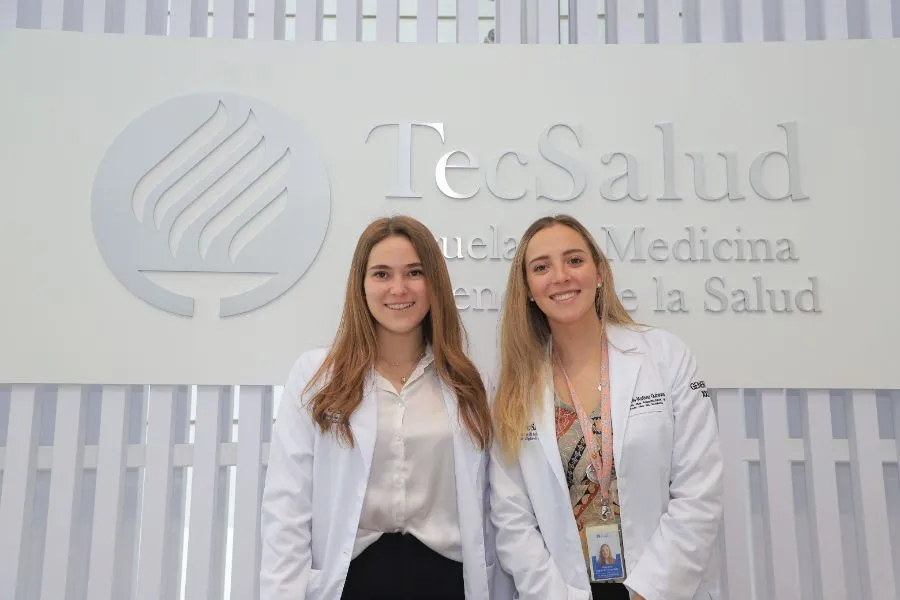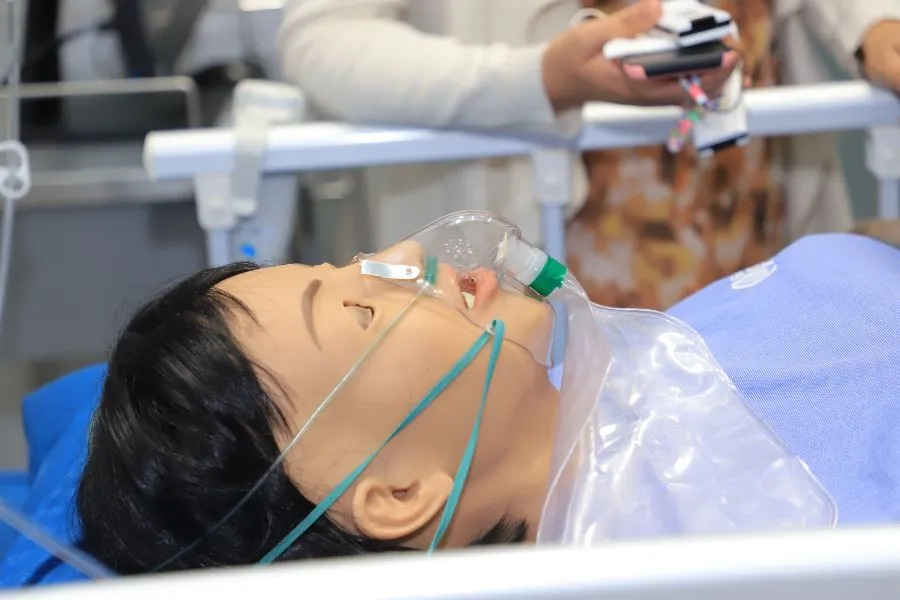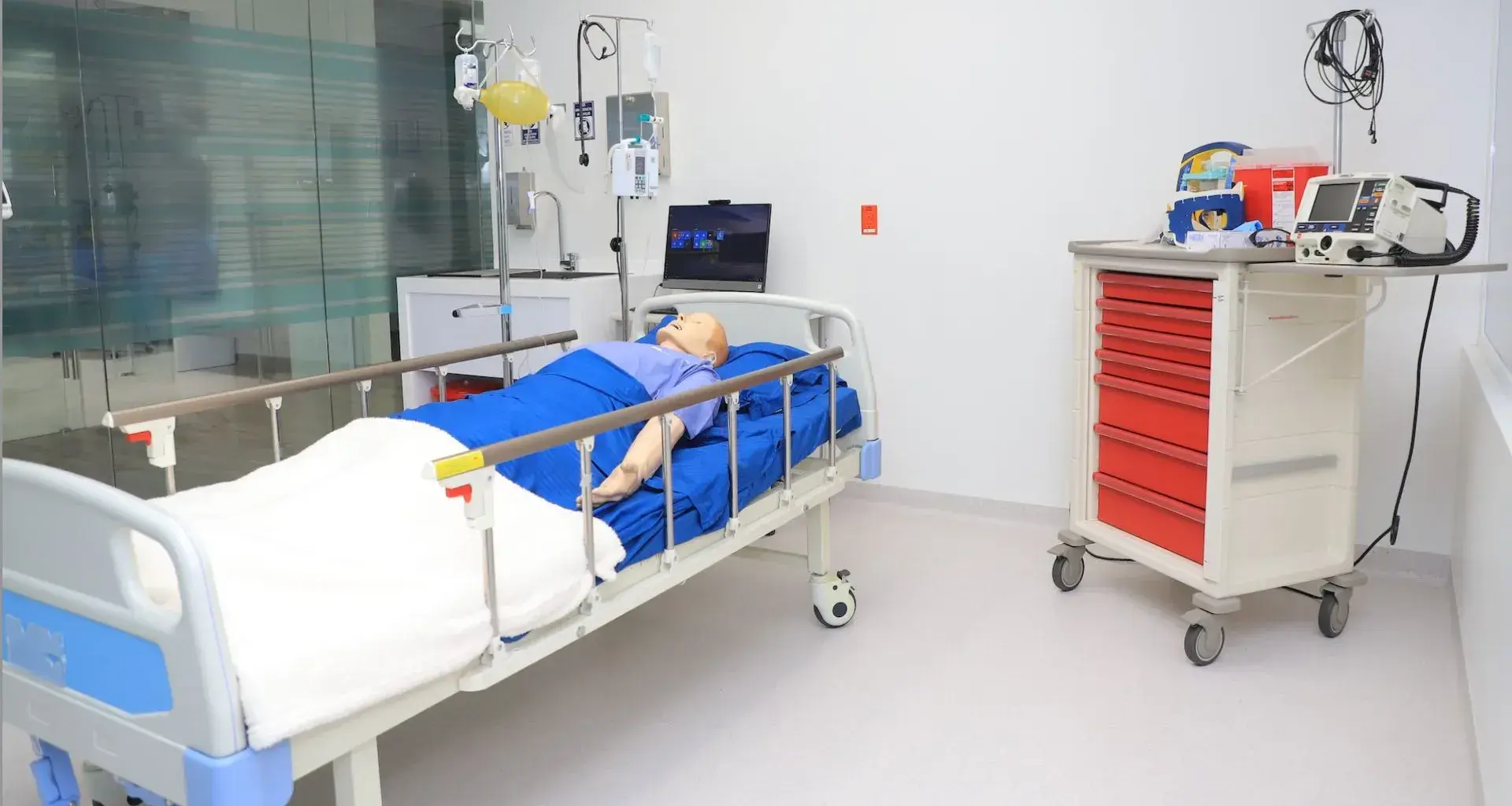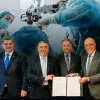Students from the School of Medicine and Health Sciences at Tec de Monterrey’s Mexico City campus will have the opportunity to apply the knowledge they have acquired in the classroom at the recently opened Clinical Simulation Center.
“Simulation-based education has gained great importance worldwide, as a strategy for training health science students.
“It provides consistent, supervised and feedback-focused practice at all levels of learning for people studying health sciences,” explained Elena Ríos, National Director of Clinical Simulation at the Tec.
Ríos spoke about the importance of health science students having the opportunity to practice using robots.

“Disciplines that focus on healthcare require exhaustive training in safe and controlled environments, so simulation centers have developed into the place to do that
“Simulation doesn’t mean only technology, as human resources are also highly valuable,” she added.
During the inauguration, Guillermo Torre, Rector of TecSalud, said that the School of Medicine has been a pioneer in innovation.
“The simulation center is an example of what we want to do in the future. It moves medical education forward.
“The School of Medicine has distinguished itself as a promoter of new educational strategies. Years ago, a problem-solving model was established, which has now evolved into the Tec21 Model,” he said.
“Disciplines that focus on healthcare require exhaustive training in safe and controlled environments.” - Elena Ríos, National Director of Clinical Simulation at the Tec.
Jorge Valdez, Dean of the School of Medicine and Health Sciences, said that education and simulation should go hand in hand.
“Health science education cannot be conceived of without including simulation processes.
“It’s a high-quality center that should provide satisfaction to both students and teachers. We should make the best use of it,” he explained.
The School of Medicine has distinguished itself as a promoter of new educational strategies. - Guillermo Torre, Rector of TecSalud
“It’s part of a dream”
For Guillermo Domínguez Cherit, Dean of the Tec’s School of Medicine and Health Sciences in the Mexico City Region, the Simulation Center is a dream come true.
“This is part of the dream for the School of Medicine in Mexico City. It’s one more success we’ve achieved.
“The idea is to make the most of it, and now we have all the necessary resources,” he said
Finally, the Tec’s Vice President for the Mexico City Region, Rashid Abella, expressed his joy at the inauguration of the space.
“We searched for the best space for the Clinical Simulation Center. I’m very happy that projects focused on health issues are coming together,” he said.

Find out more!
The Clinical Simulation Center has several rooms that are described below:
Skills-development room: This has capacity for up to 60 participants, and includes equipment for projection, audio, and the equipment necessary for students to develop disciplinary and cross-cutting skills.
Hospitalization rooms: At the moment, these house pediatric simulators. Thanks to the mobility of the equipment, a hybrid simulation using real patients may be possible.
Labor, delivery, and recovery room: Processes requiring the use of both delivery and newborn care simulations at different levels of severity can be practiced here.
Emergency rooms: These have high-fidelity simulators that allow skills development to take place.

Operating room: Operating room behavioral skills, basic surgical skills, advanced monitoring, and pre- and post-operative management skills can be developed here.
Intensive care room: This has a high-fidelity simulator to practice punctures, tube placement, drainage, advanced wound care, as well as invasive and non-invasive patient monitoring.
Multitasking room: This has capacity for up to 30 attendees who can work on different activities such as cardiac risk studies, training courses, and more.
Debriefing rooms: These are designed for small-group discussion.
Consulting rooms: These have the capacity to function as psychology, medicine, or nutrition consulting rooms and have the necessary equipment. Real patients can be seen here.
READ MORE:





